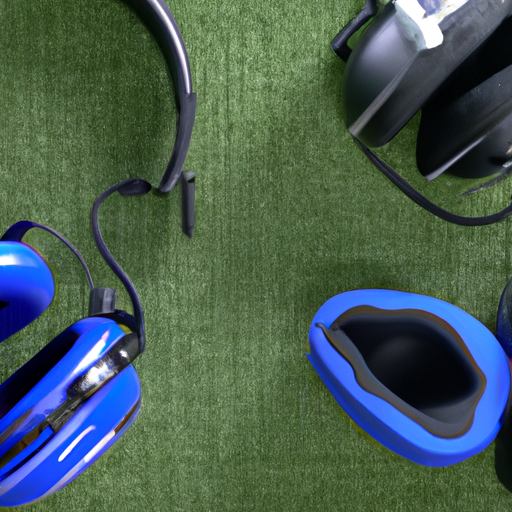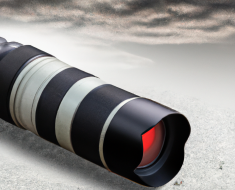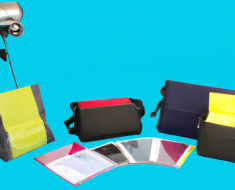“Protect your ears, choose wisely: Muffs vs. Plugs.”
Benefits of Using Ear Muffs for Shooting
When it comes to protecting your hearing while shooting, there are two main options: ear muffs and ear plugs. Both have their own set of benefits, but in this article, we will focus on the advantages of using ear muffs for shooting.
One of the biggest benefits of using ear muffs for shooting is their ease of use. Simply slip them over your ears, adjust the headband for a secure fit, and you’re good to go. There’s no need to worry about properly inserting ear plugs or making sure they stay in place while you’re shooting.
Ear muffs also provide a higher level of protection compared to ear plugs. While ear plugs can help reduce noise levels, they may not block out as much sound as ear muffs. This is especially important when shooting high-caliber firearms or in indoor shooting ranges where noise levels can be extremely loud.
In addition to providing better protection, ear muffs are also more comfortable to wear for extended periods of time. The padded ear cups help cushion your ears from the pressure of gunshots, making them ideal for long shooting sessions or competitions.
Another advantage of using ear muffs for shooting is their versatility. Many models come with adjustable headbands and ear cups, allowing you to customize the fit for maximum comfort. Some even have built-in features like Bluetooth connectivity or audio input jacks so you can listen to music or communicate with others while shooting.
Ear muffs are also easier to keep clean and maintain compared to ear plugs. Most models can be wiped down with a damp cloth or disinfected with alcohol wipes, making it simple to keep them hygienic after each use. Ear plugs, on the other hand, may need to be replaced more frequently due to wear and tear.
Overall, using ear muffs for shooting offers a number of benefits that make them a popular choice among shooters. From their ease of use and superior protection to their comfort and versatility, ear muffs are a reliable option for anyone looking to safeguard their hearing while enjoying the sport of shooting.
In conclusion, while both ear muffs and ear plugs have their own advantages, ear muffs stand out as the best choice for shooters looking for reliable hearing protection. Their ease of use, superior protection, comfort, versatility, and ease of maintenance make them a top pick for anyone serious about preserving their hearing health while enjoying the sport they love. So next time you hit the range, don’t forget to pack your trusty pair of ear muffs for a safe and enjoyable shooting experience.
Advantages of Ear Plugs for Hearing Protection
When it comes to protecting your hearing while shooting, there are two main options to consider: ear muffs and ear plugs. Both provide valuable protection against the loud noises associated with shooting, but each has its own advantages. In this article, we will explore the benefits of using ear plugs for hearing protection while shooting.
One of the primary advantages of using ear plugs is their compact size and portability. Ear plugs are small and lightweight, making them easy to carry with you wherever you go. This makes them a convenient option for shooters who are on the move or who may not have a lot of space to store bulky ear muffs.
In addition to their portability, ear plugs also offer a comfortable fit that is customizable to each individual’s ear shape. This means that you can find a pair of ear plugs that fit snugly in your ears without causing discomfort or irritation. This is especially important for shooters who may be wearing their hearing protection for long periods of time.
Another advantage of using ear plugs for hearing protection is their ability to provide consistent noise reduction across a wide range of frequencies. Ear plugs are designed to block out loud noises while still allowing you to hear important sounds, such as range commands or conversations with fellow shooters. This can help you stay aware of your surroundings while still protecting your hearing from harmful noise levels.
Ear plugs are also an affordable option for hearing protection, making them accessible to shooters of all budgets. You can find a wide variety of ear plugs on the market, ranging from basic foam inserts to custom-molded options. This means that you can choose the ear plugs that best fit your needs and preferences without breaking the bank.
Finally, ear plugs offer a high level of versatility when it comes to shooting activities. Whether you are practicing at the range, hunting in the field, or participating in competitive shooting sports, ear plugs can provide reliable protection in any environment. They are also compatible with other forms of protective gear, such as helmets or safety glasses, making them a versatile choice for shooters of all kinds.
In conclusion, ear plugs offer a number of advantages for shooters looking to protect their hearing while enjoying their favorite pastime. Their compact size, comfortable fit, consistent noise reduction, affordability, and versatility make them a valuable option for anyone looking to safeguard their hearing health. Whether you are a casual shooter or a seasoned marksman, investing in a pair of quality ear plugs can help ensure that you can continue enjoying shooting activities for years to come.
Comparing Noise Reduction Ratings of Muffs and Plugs

When it comes to shooting sports, protecting your hearing is essential. Exposure to loud noises, such as gunshots, can cause irreversible damage to your ears. That’s why it’s important to invest in quality hearing protection. Two popular options for shooters are earmuffs and earplugs. In this article, we’ll compare the noise reduction ratings of muffs and plugs to help you determine which option is best for you.
Noise reduction ratings (NRR) are a measure of how much noise a particular hearing protection device can block out. The higher the NRR, the more effective the device is at reducing noise levels. Earmuffs typically have a higher NRR than earplugs, making them a popular choice for shooters who are looking for maximum protection.
Earmuffs are designed to cover the entire ear, creating a seal that blocks out loud noises. This design allows earmuffs to offer a high level of protection against gunshots and other loud sounds. Most earmuffs have an NRR between 22 and 33 decibels, with some models offering even higher levels of protection.
Earplugs, on the other hand, are inserted into the ear canal to block out noise. While earplugs may not offer as much protection as earmuffs, they are still an effective option for shooters. Earplugs typically have an NRR between 20 and 32 decibels, depending on the material and design of the plug.
When comparing the noise reduction ratings of muffs and plugs, it’s important to consider the environment in which you will be shooting. If you are shooting in a controlled indoor range or in a hunting blind where noise levels are relatively consistent, earmuffs may be the best option for you. However, if you are shooting outdoors or in a dynamic environment where noise levels can vary, earplugs may be more suitable.
Another factor to consider when choosing between muffs and plugs is comfort. Earmuffs can be bulky and heavy, which may be uncomfortable for some shooters, especially if you are wearing them for extended periods of time. Earplugs, on the other hand, are lightweight and discreet, making them a more comfortable option for some shooters.
In addition to comfort, it’s also important to consider the fit of your hearing protection device. Earmuffs should fit snugly over your ears without gaps or leaks, while earplugs should be inserted properly into the ear canal to create a seal. A proper fit is essential for both muffs and plugs to effectively block out loud noises.
Ultimately, the best hearing protection for shooters will depend on your personal preferences and shooting environment. If you value maximum protection and don’t mind the bulkiness of earmuffs, they may be the best option for you. However, if you prefer a more comfortable and discreet option, earplugs may be more suitable.
In conclusion, both earmuffs and earplugs offer effective hearing protection for shooters. By comparing their noise reduction ratings and considering factors such as comfort and fit, you can determine which option is best for you. Whether you choose muffs or plugs, investing in quality hearing protection is essential for preserving your hearing while enjoying shooting sports.
Comfort and Fit: Ear Muffs vs. Ear Plugs
When it comes to protecting your hearing while shooting, there are two main options to choose from: ear muffs and ear plugs. Both offer effective protection against loud noises, but they differ in terms of comfort and fit. In this article, we will explore the pros and cons of each option to help you make an informed decision.
Ear muffs are a popular choice among shooters for their ease of use and high level of protection. They come in a variety of styles, from basic foam ear muffs to more advanced electronic models that amplify low-level sounds while blocking out loud noises. Ear muffs are typically worn over the ears and are held in place by an adjustable headband. This makes them easy to put on and take off, and they can be adjusted to fit most head sizes.
One of the main advantages of ear muffs is their comfort. Because they sit outside the ear canal, they do not cause any discomfort or pressure inside the ear. This makes them ideal for long shooting sessions or for shooters who wear glasses or other headgear that may interfere with the fit of ear plugs. Ear muffs also provide a good seal around the ears, which helps to block out noise more effectively than ear plugs.
However, some shooters may find ear muffs to be bulky or cumbersome, especially if they need to wear other equipment such as helmets or goggles. In addition, ear muffs can be hot and sweaty in warm weather, which may make them less comfortable to wear for extended periods of time.
On the other hand, ear plugs are a compact and lightweight option for hearing protection. They are inserted directly into the ear canal, where they create a tight seal that blocks out noise. Ear plugs come in a variety of materials, including foam, silicone, and custom-molded options. Some ear plugs also feature filters that allow for better communication while still providing protection against loud noises.
One of the main advantages of ear plugs is their portability. Because they are small and easy to carry, they can be kept in a pocket or bag until needed. This makes them a convenient option for shooters who are on the go or who need to wear other gear that may interfere with the fit of ear muffs.
Ear plugs are also less likely to interfere with shooting equipment such as helmets or goggles, making them a good choice for tactical shooters or those who engage in other activities where bulky headgear is necessary. In addition, some shooters find that ear plugs offer a more natural fit and feel compared to ear muffs.
However, some shooters may find that ear plugs cause discomfort or irritation after extended use. Improperly inserted ear plugs may not provide a proper seal, which can reduce their effectiveness at blocking out noise. In addition, some shooters may find it difficult to insert or remove ear plugs correctly, which can lead to frustration or decreased compliance with wearing them regularly.
In conclusion, both ear muffs and ear plugs offer effective protection against loud noises while shooting. The choice between the two ultimately comes down to personal preference and individual needs. Ear muffs are comfortable and easy to use, but may be bulky or hot in warm weather. Ear plugs are portable and lightweight, but may cause discomfort or difficulty with insertion for some users.
Ultimately, the best hearing protection for shooters is one that fits well, feels comfortable, and provides adequate protection against loud noises. Whether you choose ear muffs or ear plugs, be sure to wear them consistently whenever you are shooting to preserve your hearing for years to come.
Best Hearing Protection Options for Different Shooting Environments
When it comes to shooting sports, protecting your hearing is crucial. The loud noise of gunfire can cause permanent damage to your ears if not properly protected. There are many options available for hearing protection, but two of the most popular choices are earmuffs and earplugs. Each has its own advantages and disadvantages, so it’s important to consider which option is best for your shooting environment.
Earmuffs are a popular choice for shooters because they provide a high level of protection. They cover the entire ear, creating a seal that blocks out loud noises. This makes them ideal for indoor shooting ranges or other environments where noise levels are consistently high. Earmuffs are also easy to put on and take off, making them a convenient option for shooters who need to quickly adjust their hearing protection.
On the other hand, earplugs are a more discreet option that fit directly into the ear canal. While they may not provide as much protection as earmuffs, they are still effective at reducing noise levels. Earplugs are also more comfortable to wear for long periods of time, making them a good choice for shooters who spend hours at the range. Additionally, earplugs are smaller and easier to carry around, making them a convenient option for shooters on the go.
When deciding between earmuffs and earplugs, it’s important to consider the specific needs of your shooting environment. If you frequently shoot in indoor ranges or other loud environments, earmuffs may be the best option for you. Their high level of protection will ensure that your ears stay safe from loud noises. However, if you prefer a more discreet option or need something that is comfortable to wear for long periods of time, earplugs may be the better choice.
It’s also worth noting that some shooters choose to use both earmuffs and earplugs for maximum protection. This combination can provide an extra layer of defense against loud noises, especially in extremely noisy environments. If you want to ensure that your hearing is fully protected while shooting, using both earmuffs and earplugs may be the best option for you.
Ultimately, the best hearing protection for shooters depends on your individual needs and preferences. Whether you choose earmuffs, earplugs, or a combination of both, it’s important to prioritize protecting your ears while shooting. By investing in high-quality hearing protection, you can enjoy your favorite shooting sports without putting your hearing at risk.
In conclusion, both earmuffs and earplugs are effective options for hearing protection while shooting. Consider the specific needs of your shooting environment when choosing between the two options. Whether you prefer the high level of protection provided by earmuffs or the comfort and convenience of earplugs, prioritize protecting your hearing while enjoying your favorite shooting sports.






